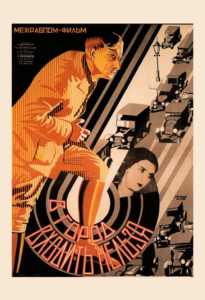A foley artist is in charge of the recreation of everyday sounds in real time, rather than pulling pre-recorded sounds from a soundbank. Foley artists work on foley stages with viewing screens, recording equipment, and props for creating sounds. Two foley artists and one mixer usually work together on one foley stage. The well-recorded sounds that foley artists produce replace most of the sounds captured during filming. Foley artists do not re-record dialogue, even though this is usually replaced.
Ways Foley Effects Enhance a Film
The work of foley artists replaces sound recorded on set for several reasons:
- Sound recorded on set is poor quality compared to sound recorded in a studio. It is often unclear or too quiet to sound realistic.
- Recording sounds as separate tracks lets production studios adjust their levels individually. This means the sound of crunching leaves can be increased without increasing the volume of dialogue, for example.
- Experienced foley artists create sounds that enhance scenes by making them seem more realistic.
- Good foley sounds draw viewers into a production by adding atmosphere.
- Recording foley sounds separate from dialogue makes it easy for studios to replace only the dialogue for foreign markets. The foley becomes part of a music and effects (M&E) track.
Etymology and the Origins of Foley Art
The title “foley artist” pays tribute to revolutionary sound man Jack Foley. A regular part of Stanley Kubrick’s crew, Jack Foley is thought to be the world’s first foley artist. Despite his work, Jack Foley’s name did not appear in the credits of any film. However, the job title is a fitting tribute to his innovation.
The 3 Elements of Foley Sound
Foley sound is a type of diegetic sound, which is sound that occurs within the world of a production, such as a TV program or film. Music and narration are types of non-diegetic sound, because the production’s characters would not hear them. There are three key elements of foley sound:
Footsteps
The natural sound of footsteps captured on set is usually too quiet, so the foley artist must exaggerate it. Foley artists wear different shoes and walk on different surfaces, such as gravel and wooden panels, to create the right sounds. They must pay attention to the following elements that impact sound:
- The type of shoes the character wears
- The surface they walk on
- The character’s weight
- The character’s speed
- The character’s demeanor
Movement
Movement refers to sounds other than footsteps that people make as they move. These sounds may occur when people are in motion or staying in one place. The sound of fabric rubbing together as someone walks or shifts in their seat are common movement sounds.
Props/Specifics
Props are sounds made by items that mimic the action on film. They are sometimes called specifics. Props sounds are sometimes created by the item that usually makes the sound. For example, a foley artist would likely write something down on a notepad to create the sound of a character writing. However, more unusual props can also make the sounds. For example, the sound of cracking celery can mimic the sound of a human bone breaking. Prop sounds can mimic sounds that occur in the real world. They can also mimic fantasy sounds, such as the sound of a monster roaring. A single prop can make a prop sound. Layering several recorded sounds is another common technique.
How Is Foley Sound Made?
Foley artists watch the production project through, noting what sounds they must make and how they could create them. They then gather all the props they need from a studio warehouse or storage zone. Once they assemble their props, they watch the production again and perform actions along with it to make sounds. They may stomp their feet, bang props together, and smash glass, for example.
What Happens During a Foley Recording Session?
Foley artists originally recorded all the sounds in one continuous take. However, modern editing tools allow foley artists to use multiple takes to get their sounds just right. They break each scene down into individual sounds, then perform actions to create them one by one. They record these sounds in real time. Foley artists watch their viewing screens as they perform to make sure they make sounds at the right time. If a sound doesn’t seem right, the foley artist will brainstorm a better way to create it and reshoot until it’s perfect.
What Professional and Interpersonal Skills Do You Need?
Foley artists use a combination of natural skills and skills acquired through training to succeed. Studios look for the following qualities in their foley artists:
- Coordination: Foley artists must be able to match producing sounds with the footage they see on the viewing screen.
- Creativity: Foley artists use their creativity to conceive how to make sounds that are difficult to reproduce or not heard in real life.
- Strong work ethic: Studios look for hard workers who will reliably produce high-quality tracks.
- Team player: Foley artists work with a team, so they should enjoy collaborating and listening to the ideas of others.
- Technical knowledge: Foley artists need to understand basic acoustics, sound editing, and post-production processes.
- Attention to detail: Paying attention to details helps Foley artists create the perfect sounds.
- Time management: Foley artists must work quickly on many productions, so good time management skills are crucial.
The Secret World of Foley from Short of the Week on Vimeo.
Education & Training
Foley artists do not need a degree. Studying at a film school can help aspiring foley artists learn more about the industry, though. Some film schools have foley stages that can help future foley artists hone their craft.
Getting Started
Interning with a professional foley artist can be very beneficial. Internships teach aspiring foley artists more about sound production and deepens their knowledge of foley techniques. Aspiring foley artists could undertake a formal internship or simply ask to shadow and work with a foley artist they admire. IMDB Pro lists contact details for a range of film professionals, including foley artists. Aspiring foley artists can also practice their craft at home. Turning down the volume on a television program or film, then making sounds that match the action, can help hone a foley artist’s skills.
Employment Career Path
There is no traditional career path for foley artists. These production professionals can come from a range of different backgrounds. However, many foley artists have worked in sound or music. Common past roles for foley artists include:
- Runner
- Sound or effects editor
- Field recordist
- Actor
- Dancer
Finding Work
There is relatively small demand for foley artists, so competition is fierce. Shadowing a foley artist or working in another area of production can help people secure their first foley roles. Working on short films and independent features can be a stepping stone to larger productions.
Foley Outside Filmmaking
While filmmaking studios are the largest employer of foley artists, it’s not the only choice. Some foley artists also work for documentary crews and television programs.
Foley as Performance
While foley is usually behind the scenes, foley art can also be viewed as performance. Creating foley is very physical, and therefore fascinating to watch.
Foley in Theater
Modern theater companies are embracing the way foley can enhance their productions. Sometimes foley artists create sounds on stage. They may also teach stage actors how to create sounds during their performances. A foley artist might also work for a theater company recording its performances for later broadcasts.
Best Cities for This Job
Most jobs for foley artists are in metropolitan cities with large entertainment studios. Los Angeles, Seattle, San Diego, and San Francisco are all known for employing foley artists.
Future Growth
Foley artists face an uncertain future, as many TV series are replacing their work with digital foley. However, experts insist this lacks the appealing organic quality of real foley. Perhaps companies using digital foley will realize this over time and start employing foley artists again.
Advancement
Working as a foley artist is very rewarding, so many stay with the profession for many years. However, the skills foley artists learn can also help them secure work in other areas of production and the performing arts. Some foley artists supplement their income with other production roles. Many foley artists also work in the following sound roles:
- Effects or dialogue editor
- Production sound mixer
- Boom operator
- Utility sound technician
Work Life and Lifestyle
Working as a foley artist is fast-paced. These professionals often feel that they have a lot to do and relatively little time to do it. Often projects require rapid turnaround, so the work can be stressful. The role is also physically demanding, so good physical fitness is essential. Foley artists spend time on their feet manipulating props and moving their bodies. Foley artists can face lengthy breaks between projects. Many have extra roles in the film, television, and music industries that sustain them during their downtime.
How Much Does a Foley Artist Make?
Foley artists typically earn between $200 and $400 a day. The lower rate is the average for non-union members, while the higher rate applies to union members. The average weekly salary is slightly more than $2,500. That amounts to a little more than $50 per hour.
Unions, Groups, & Associations
Foley artists with union roles can join the Motion Picture Editor’s Guild, the IATSE Local 700. Members must report around 400 hours work biannually to retain health benefits.
FAQ
Here are answers to some of the common questions people ask about being a foley artist:
What is a common mistake people make when attempting to become foley artists?
Many new foley artists charge too little to secure work. Experts suggest researching the going rate and charging it. You may drop your rate by $20 to offset your inexperience, but greater discounts suggest your work isn’t worth spending money on.
What film trends are likely to impact foley?
Several trends may impact the work of foley artists. These include:
- A preference for stylized and hyper-real sounds
- Audience preferences driving film trends, rather than interests of filmmakers
Working as a foley artist can be a creative and challenging career for anyone interested in sound.














